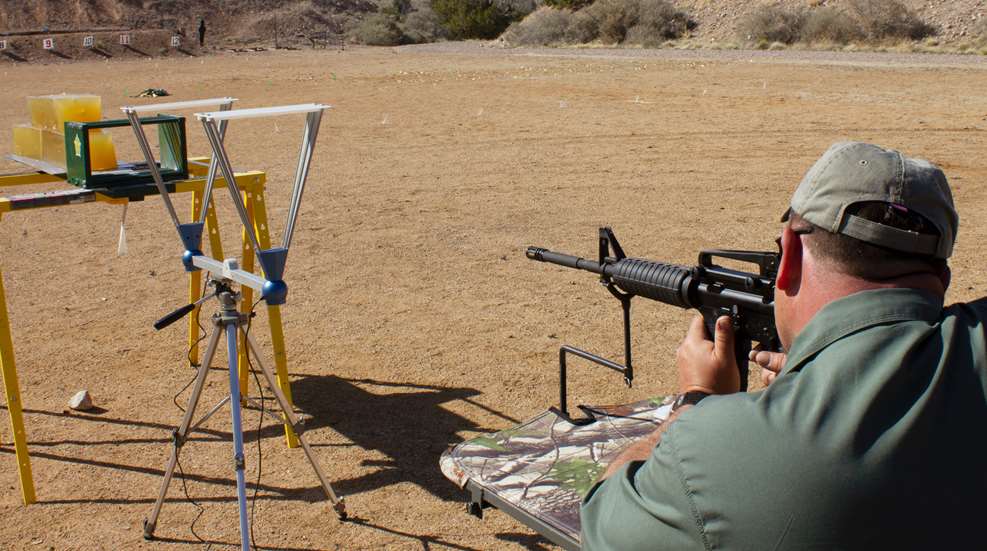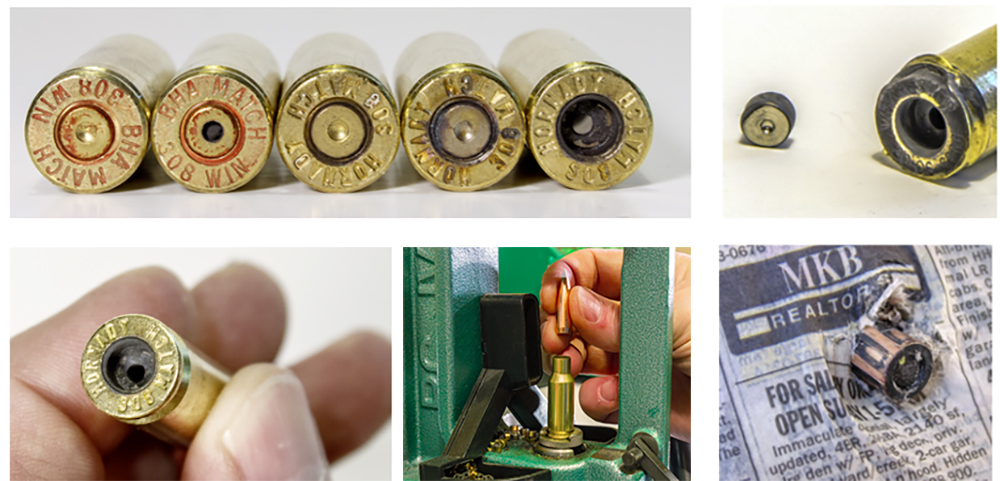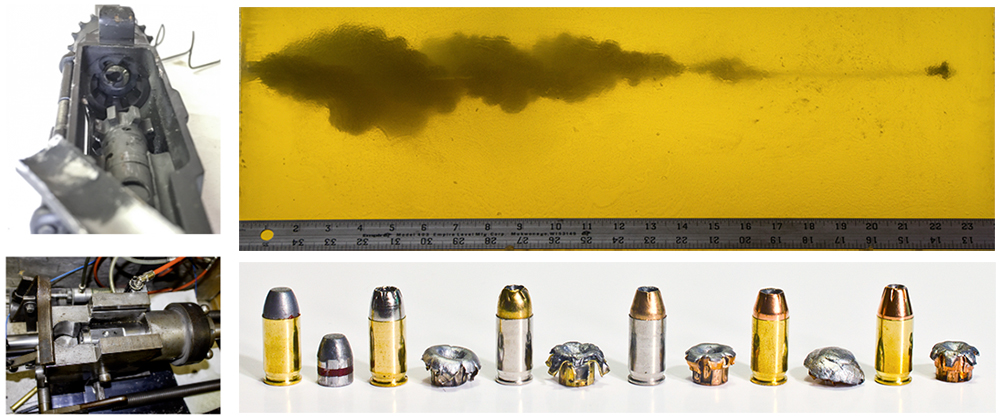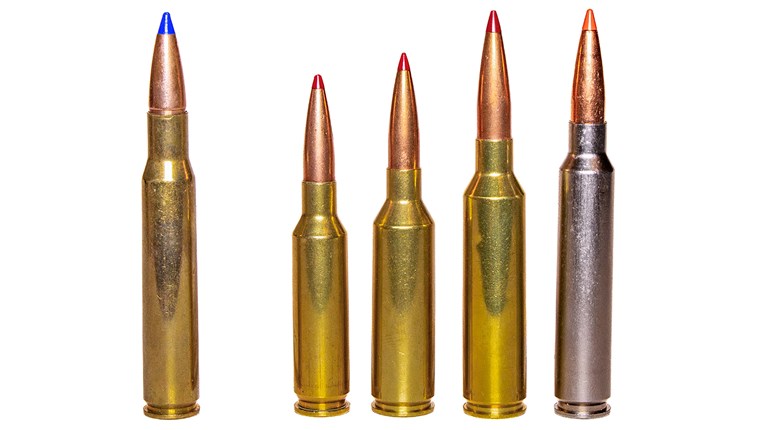
The study of ballistics incorporates internal ballistics, external ballistics and terminal ballistics. There are many assumptions associated with each area of study. Some are myths, some are like old wives’ tales and others just come from lack of knowledge. By virtue of my experience and vocation, I’ve learned a lot of things the hard way, but mostly from a lot of smart folks who know more about ballistics than I do. Here are three examples of bad ballistic assumptions, with the facts applied.
Internal Ballistics
Internal ballistics deals with everything that happens after the firing pin ignites the primer until the bullet exits the barrel. Most shooters do not need to worry about internal ballistics because factory firearms and ammunition are made to safe and exacting standards. Handloaders, however, should concern themselves with it because they create their own ammunition.
Bad Assumption: Pressure Guessing.
Truth: The most important aspect of handloading is ensuring your ammo is loaded to a safe pressure. Handloaders commonly look for pressure signs as they work up loads. These signs can include leaky primers, blown primers, flattened primers and, with semi-automatic rifles, case-head swipe. The more scientific exercise of measuring case-head expansion is also used. All these things can be signs of higher-than-desirable pressures, but they are not definitive.
If you open the action of your rifle and find the primer is not in the fired case, your immediate assumption is that an overpressure load has blown a primer. But, there can be another reason: If a primer is blown due to overpressure, it will be easy to fit back into the primer pocket because the primer pocket will have enlarged. But, it’s not uncommon with gas-driven, semi-auto guns for primers to pop out of their pocket. This occurs because the gun allows too much gas to reach the bolt before a drop in pressure releases the cartridge case from the chamber. This can result in a popped primer. When this happens, the primer will not drop back into its pocket. You can usually correct this with a gas-port adjustment and sometimes by switching to a different powder.
As for carbon deposits or gas leaks around the primer, this could be high pressure. But, it could also be a sign of overworked brass where the primer pocket is not sealing the primer well enough to prevent gas leakage. Flattened primers might be the most common suggestive sign of high pressure, but they can also be caused by excessive headspace. This can happen when new brass that’s just on the edge of, or even slightly below, the minimum spec is used.
Another suggestive indicator is case-head swipe that’s seen in gas-operated guns like the AR-15. This occurs when the bolt begins to rotate before the case has been released by the chamber, and the ejector is then dragged across the case head, scarring it. Something similar can happen in bolt guns where a mark is left on the case head by the ejector or ejector slot in the bolt face. With the gas gun, case-head swipe is most often a sign the gun is out of time. In other words, it’s allowing too much gas to reach the bolt too soon. It’s very common in AR-10s when shooting heavy bullets in .308 Win. With bolt and gas guns, case-head marks can also be caused by brass that might be just a bit on the soft side.

Measuring the expansion of the cartridge-case head is considered the professional’s way of estimating pressure, at least for those who don’t have access to a pressure lab. This method can be telling, but tests have shown it effective only about a third of the time. It’s not a foolproof system.
Without sophisticated equipment, you simply cannot make accurate estimations about pressure. Some of the reasons for this have been explained, but sometimes loads that are well over maximum show no pressure signs at all. Just because you’re not seeing the accepted signs does not mean pressures are safe. The easiest and safest way to avoid high pressure is to not exceed both the recommended charge weight and velocity. Guess on pressure all you want; it’s all fun and games until you get it wrong.
External Ballistics
Everything that occurs from the time the bullet exits the barrel until it hits something is covered under external ballistics. Knowing the external ballistics of your load is what allows you to hit your target, especially at distance. Most often, external ballistics is thought of as trajectory.
Bad Assumption: Bullet BC is the most important thing for long-range shooting.
Truth: First of all, I don’t know where you find the definition for a high BC bullet or long-range shooting. Most didn’t know what BC was, or even how to spell it, before the 6.5 Creedmoor came around. After it did, those with an aptitude for external ballistics began explaining the Creedmoor’s long-range effectiveness by illustrating how it fired bullets with high ballistic coefficients. As for “long range,” its definition seems to constantly change and of course varies depending on the cartridge. Long range with a .22 LR is much less than with a .308 Win., for example.
High BC bullets might be important for long-range shooting, but they’re not the only thing that matters. Velocity—just as it always has been and always will be—is important, too. For example, 6.5 Creedmoor is generally touted as being a better long-range cartridge than the .260 Rem., even though the .260 Rem. has more powder capacity and can push bullets faster. The reason for this is that factory rifles for the Creedmoor are built with a 1:8-inch twist as opposed to the 1:9-inch rifling twist of the .260. Because of this, factory Creedmoor ammo can be loaded with higher BC bullets.

But, let’s make a comparison. Using Hornady’s advertised data, let’s compare a 147-grain ELD Match bullet from a Creedmoor with a 130-grain ELD Match bullet from a .260 Rem. The 147-grain bullet has a G1 BC of .697 and the 130-grain bullet’s G1 BC is .554. The Creedmoor’s bullet has a 26-percent BC advantage. But, in factory ammo the 130-grain .260 bullet has a 6-percent velocity advantage.
According to Hornady’s 4DOF calculator, at 1,000 yards the 130-grain bullet from the .260 Rem. will need 29.78 MOA of elevation correction to hit point-of-aim, and the bullet from the
6.5 Creedmoor will need 29.93 MOA. The lighter, faster, lower BC bullet, has a slight edge. Why? Time of flight. You see, since gravity is a constant, and since all bullets fall to Earth at the same rate, the difference is how far they can travel in the same amount of time.
The 130-grain bullet from the .260 will get to 800 yards .003 second before the 147-grain bullet from the 6.5 Creedmoor. So, to that distance, the faster moving 130-grain bullet has less drop. In fact, because of its early speed and flatter trajectory advantage, it still has less drop out to 1,000 yards, even though it gets there almost .02 second after the higher BC bullet. Beyond 1,000 yards, the higher BC bullet shoots flatter and faster, because its higher BC has helped it retain velocity better. The higher BC bullet will also show less wind drift.
I still don’t know what qualifies as “high BC” or “long range,” but I do know this: From a trajectory standpoint, it takes a tremendous increase in BC to make up for just a small increase in velocity. High BC bullets are great for distance shooting if you don’t have to sacrifice too much velocity to shoot them.
Terminal Ballistics
Terminal ballistics deals with how a bullet will react to impact and penetration, and how it might damage what it passes through. If you’re arming yourself for self-defense or if you’re a hunter, terminal ballistics is very important. If paper is the only thing you shoot, you can skip over this section.
Bad Assumption: Stopping Power
Truth: The “stopping power” term has been tossed around for so long, shooters, firearm trainers and gunwriters use it liberally and with no quantification. The term seems to suggest there’s a level of power needed to stop a bad guy, but no one can conclusively define exactly what that level is, or how it should be measured.

Formulas based on things like kinetic energy, momentum, velocity and caliber have been created to predict stopping power. Various mixtures of gelatin and computer-generated men have been shot to try and calculate and measure the effectiveness of potential gunshot wounds. In 1991, an independent research group even shot a bunch of goats trying to establish which handgun cartridge and/or load might be best at “stopping” a fight. Gunwriters—including this one—are guilty of praising test results in gelatin and making subjective predictions. When it comes to terminal ballistics, it’s possible to measure a lot of things, but using those measurements to accurately predict how quickly a certain load will make a bad guy stop doing bad things is not possible.
And, this expectation of an accurate prediction is the problem. We have computer programs that can predict external ballistics down to the fraction of an inch at 1,000 yards. Because of this, shooters expect there to be a just as accurate means for predicting terminal performance. This is the 21st century and that only seems reasonable. But, what it seems is exactly what it’s not.
Results from the FBI’s heralded testing protocol using 10-percent ordnance gelatin are looked at with the same reverence as Bible verse, and too many of us give too much credence to them. I once investigated a self-defense shooting where the good guy instantly stopped and killed the bad guy with one round of FMJ ammo from a .380 ACP. At about that same time, an associate shot a criminal attacker 13 times with 9 mm JHP ammo. Eventually that bad guy gave up and was taken to the hospital. The distinguishing difference in these two shootings—the reason the little cartridge worked better—was shot placement.
Chaos—a state of things in which chance is supreme—is what a gunshot creates, and we cannot predict if the bullet will hit a rib and veer off course, or at what level of brain numbness an attacker might be operating. We do know that generally, rifles are better than shotguns, and shotguns are better than handguns. But, if you must have a formula, I suggest this one: stopping power is 33.3-percent shot placement, 33.3-percent penetration and 33.4-percent chaos. Hedge your bets on the first two-thirds and pray for the best regarding the last.





































